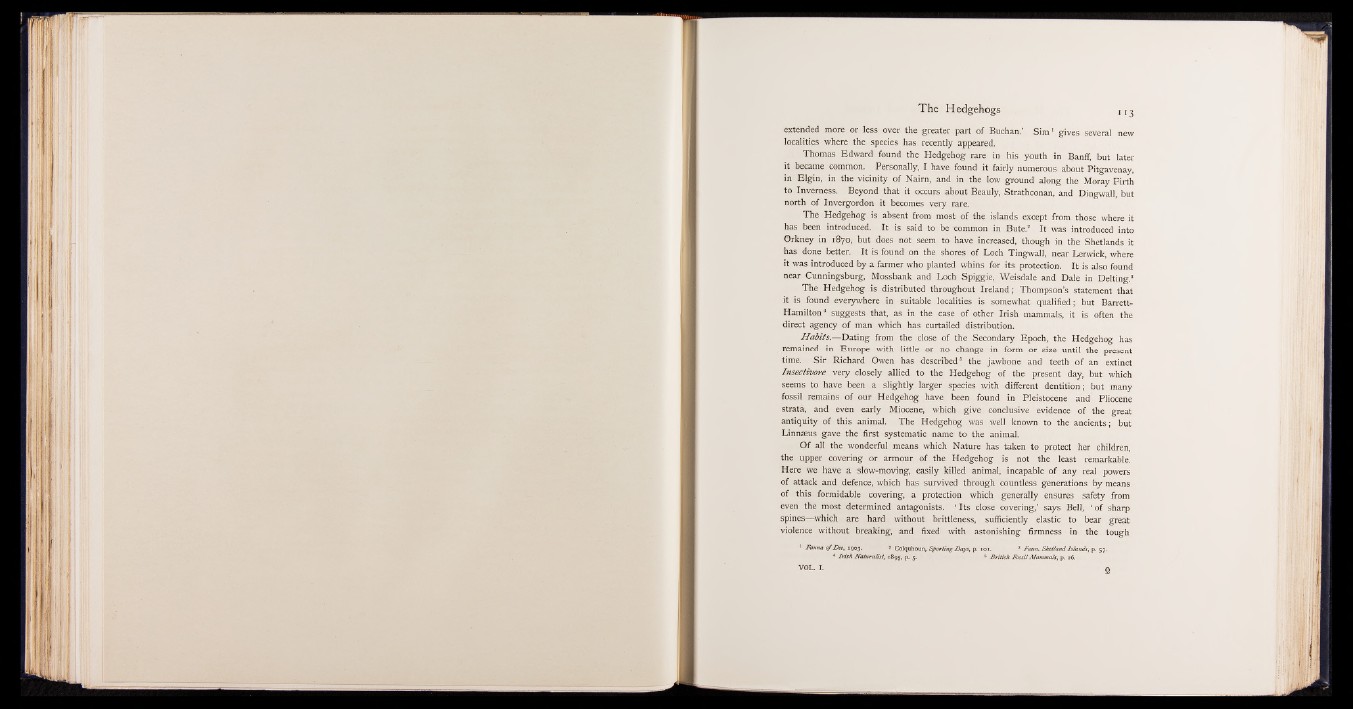
The Hedgehogs 1 13
extended more or less over the greater part of Buchan.’ Sim1 gives several new
localities where the species has recently appeared.
Thomas Edward found the Hedgehog rare in his youth in Banff, but later
it became common. Personally, I have found it fairly numerous about Pitgavenay,
in Elgin, in the vicinity of Nairn, and in the low ground along the Moray Firth
to Inverness. Beyond that it occurs about Beauly, Strathconan, and Dingwall, but
north of Invergordon it becomes very rare.
The Hedgehog is absent from most of the islands except from those where it
has been introduced. It is said to be common in Bute.? It was introduced into
Orkney in 1870, but does not seem to have increased, though in the Shetlands it
has done better. It is found on the shores of Loch Tingwall, near Lerwick, where
it was introduced by a farmer who planted whins for its protection. It is also found
near Cunningsburg, Mossbank and Loch Spiggie, Weisdale and Dale in Delting.8
The Hedgehog is distributed throughout Ireland; Thompson’s statement that
it is found everywhere in suitable localities is somewhat qualified; but Barrett-
Hamilton4 suggests that, as in the case of other Irish mammals, it is often the
direct agency of man which has curtailed distribution.
Habits.— Dating from the close of the Secondary Epoch, the Hedgehog has
remained in Europe with little or no change in form or size until the present
time. Sir Richard Owen has described6 the jawbone and teeth of an extinct
Insectivore very closely allied to the Hedgehog of the present day, but which
seems to have been a slightly larger species with different dentition; but many
fossil remains of our Hedgehog have been found in Pleistocene and Pliocene
strata, and even early Miocene, which give conclusive evidence of the great
antiquity of this animal. The Hedgehog was well known to the ancients; but
Linnseus gave the first systematic name to the animal.
Of all the wonderful means which Nature has taken to protect her children,
the upper covering or armour of the Hedgehog is not the least remarkable.
Here we have a slow-moving, easily killed animal, incapable of any real powers
of attack and defence, which has survived through countless generations by means
of this formidable covering, a protection which generally ensures safety from
even the most determined antagonists. ‘ Its close covering,’ says Bell, ‘ of sharp
spines— which are hard without brittleness, sufficiently elastic to bear great
violence without breaking, and fixed with astonishing firmness in the tough
1 Fauna o f Dee, 1903. * Colquhoun, Sporting Days, p. xox. 3 Faun. Shetland Islands, p. 57.
3 Irish Naturalist, 1895, p. 5. 8 British Fossil Mammals, p. 26.
VOL. I. Q